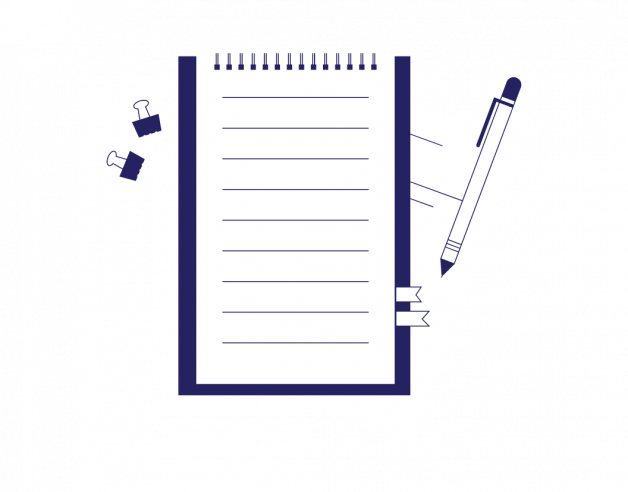
-
5-minute read
-
25th December 2022
Essay Tips: How to Paraphrase Effectively
Writing an essay or research paper is no simple task. It’s hard enough to gather research and write your paper within a tight deadline, but you also have to ensure that you aren’t plagiarizing somebody else’s work. This means you’ll need to give credit to all sources that you used to support your claims with appropriate citations and references.
However, submitting a paper filled with citations isn’t the way to go. Many professors will reject papers with chunks of quoted sources – even if you cite them properly. Conversely, you can’t submit a paper without citations. A professor will either question your knowledge or accuse you of plagiarism.
Therefore, you need to have a healthy balance of your ideas and supporting claims (citations) in your paper. One way of doing this is by paraphrasing. However, many students don’t fully understand this concept or how to do it effectively. That’s where this post comes in!
What Is Paraphrasing?
Paraphrasing is taking the ideas or research of other authors and putting them into your own words. It demonstrates your understanding of what you’ve read and helps you to ensure that your entire text is written in a cohesive style. Paraphrasing is a legitimate academic writing skill that can easily boost your grades when it’s done effectively. It’s better than quoting sources.
Check out the following tips for paraphrasing the right way. Once you finish reading this post, you’ll hopefully feel more confident in your paraphrasing ability and ready to tackle your next essay with ease!
1. Understand What You’ve Read
Make sure you understand the quotation or sentence you want to paraphrase. If there’s one thing we want you to remember from this post, it’s this! If you don’t fully understand it, you won’t be able to rewrite it in your own words.
Imagine having to explain the original passage to a friend. How would you tell them in your own words? We recommend reading the original sentence several times and even a few times aloud. We also recommend highlighting keywords, which are needed to ensure that the meaning remains the same. Let’s look at an example of a sentence that we want to paraphrase:
Source: Stankovic, D. (2012). Academic Writing. Cambridge Press.
Notice that the bold words are necessary for the meaning, so in your paraphrase, you should use those exact words or synonyms of them. Try finding a few synonyms first, and then decide which one resonates with your own words.
2. Restructure the Sentence
Rewriting a sentence by changing one or two words isn’t proper paraphrasing. Many students erroneously use a “copy and paste” method to change a few words in their paraphrased version. However, you need to change the sentence structure as well.
It would also help if you did this without looking at the original text, which is why we encourage reading the original multiple times. Here is an example of paraphrasing the sentence from our first tip with bolded words as synonyms:
As you can see, the sentence has been restructured, making it significantly different from the original text. However, the meaning remains the same.
3. Compare Your Paraphrase with the Original Text
This might seem simple, but there are a few things to consider when comparing your paraphrase with the original sentence:
● Have you used synonyms for necessary words?
Find this useful?
Subscribe to our newsletter and get writing tips from our editors straight to your inbox.
Subscribe to Beyond the Margins and get your monthly fix of editorial strategy, workflow tips, and real-world examples from content leaders.
● Is the sentence structure significantly different?
● Is the basic meaning still the same?
The goal is to create a significantly different sentence structure while maintaining the original meaning. Of course, if you changed the meaning, you’ll need to correct the paraphrase!
4. Make Sure the Paraphrased Text Makes Sense
A common error associated with paraphrasing is an incoherent paraphrased text. This often happens because the writer hasn’t properly understood the original text or has used an online paraphrasing tool. Take this example of a paraphrase without a clear meaning:
Attempted paraphrase: The provision of indispensable instruction during the seizing of letters is vital for the safeguarding of architecturally sound manuscripts.
The attempted paraphrase is entirely different from the original. The writer has likely used a thesaurus or paraphrasing tool to find a synonym for each word. Paraphrasing doesn’t mean substituting every word with a synonym!
Remember the following to ensure coherent paraphrasing:
● Focus on the overall point of the original text.
● Avoid using paraphrasing tools, as they often change the meaning of a text.
● Use simple language instead of complex words.
5. Cite and Reference the Original Text
Yes, you must provide an in-text citation and reference list entry for each paraphrased sentence or passage! Just because you have paraphrased an idea doesn’t mean you don’t have to provide a citation. Otherwise, you’ll be subjected to the perils of plagiarism! Here is an example of a properly cited paraphrase:
Omitting citations can happen accidentally. For example, you might rush to finish the paper or be worried about citing a source too frequently. However, it’s important to know that many institutions use plagiarism detection software, and therefore, a paraphrased text without an in-text citation won’t go unnoticed. So, cite for your sake (and the sake of your grade).
Are you currently working on an essay or research paper? Don’t forget to proofread it once it’s done. Our team of experts can ensure perfect spelling, punctuation, and grammar. We can also check for proper citation and referencing. Submit a 500-word document today, and we’ll proofread it for free!




